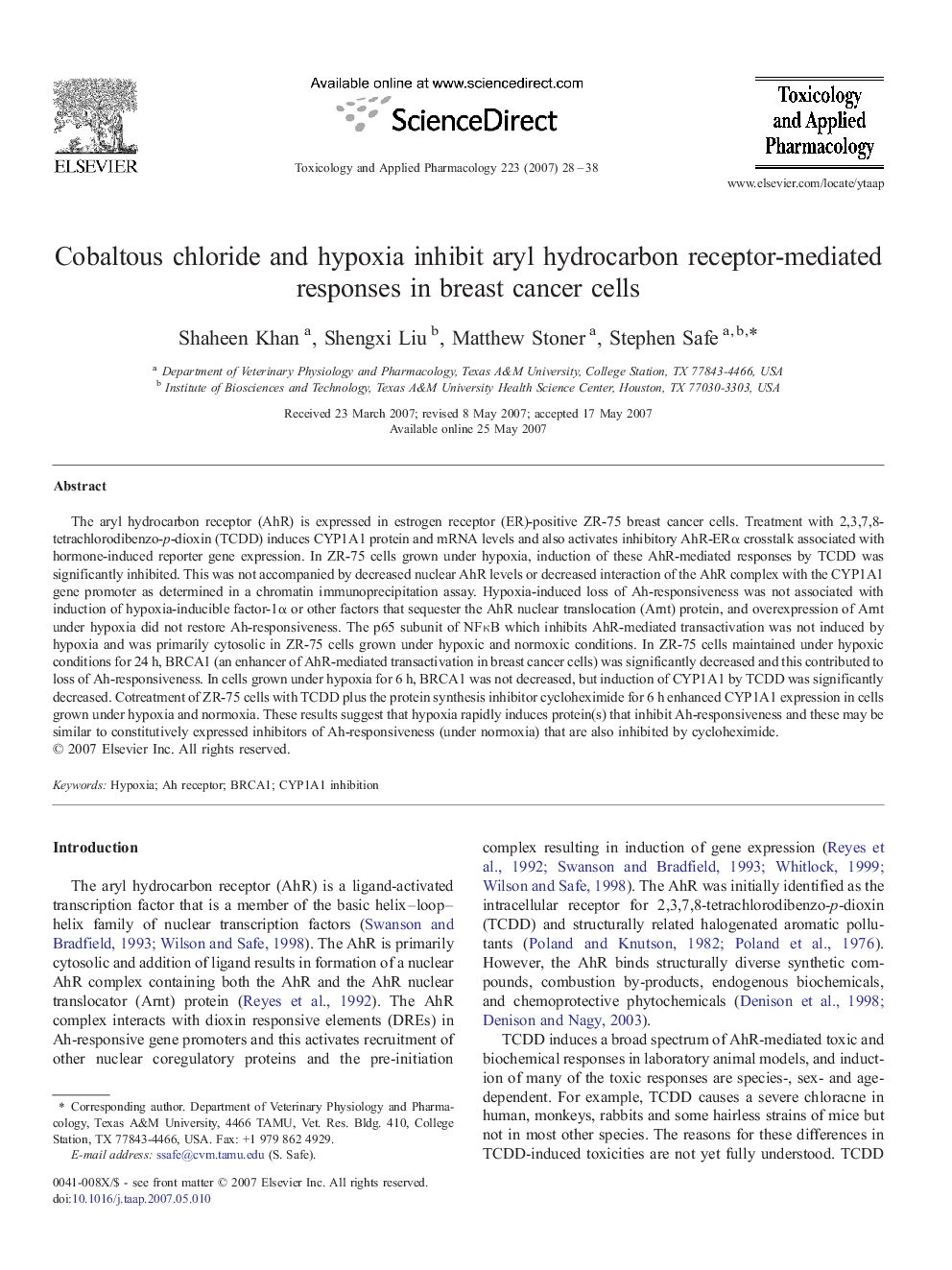| کد مقاله | کد نشریه | سال انتشار | مقاله انگلیسی | نسخه تمام متن |
|---|---|---|---|---|
| 2571008 | 1128612 | 2007 | 11 صفحه PDF | دانلود رایگان |

The aryl hydrocarbon receptor (AhR) is expressed in estrogen receptor (ER)-positive ZR-75 breast cancer cells. Treatment with 2,3,7,8-tetrachlorodibenzo-p-dioxin (TCDD) induces CYP1A1 protein and mRNA levels and also activates inhibitory AhR-ERα crosstalk associated with hormone-induced reporter gene expression. In ZR-75 cells grown under hypoxia, induction of these AhR-mediated responses by TCDD was significantly inhibited. This was not accompanied by decreased nuclear AhR levels or decreased interaction of the AhR complex with the CYP1A1 gene promoter as determined in a chromatin immunoprecipitation assay. Hypoxia-induced loss of Ah-responsiveness was not associated with induction of hypoxia-inducible factor-1α or other factors that sequester the AhR nuclear translocation (Arnt) protein, and overexpression of Arnt under hypoxia did not restore Ah-responsiveness. The p65 subunit of NFκB which inhibits AhR-mediated transactivation was not induced by hypoxia and was primarily cytosolic in ZR-75 cells grown under hypoxic and normoxic conditions. In ZR-75 cells maintained under hypoxic conditions for 24 h, BRCA1 (an enhancer of AhR-mediated transactivation in breast cancer cells) was significantly decreased and this contributed to loss of Ah-responsiveness. In cells grown under hypoxia for 6 h, BRCA1 was not decreased, but induction of CYP1A1 by TCDD was significantly decreased. Cotreatment of ZR-75 cells with TCDD plus the protein synthesis inhibitor cycloheximide for 6 h enhanced CYP1A1 expression in cells grown under hypoxia and normoxia. These results suggest that hypoxia rapidly induces protein(s) that inhibit Ah-responsiveness and these may be similar to constitutively expressed inhibitors of Ah-responsiveness (under normoxia) that are also inhibited by cycloheximide.
Journal: Toxicology and Applied Pharmacology - Volume 223, Issue 1, 15 August 2007, Pages 28–38